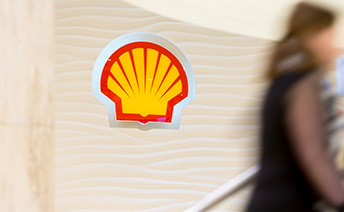Note 25 - Financial instruments
Financial instruments in the Consolidated Balance Sheet include investments in securities (see Note 14), cash and cash equivalents (see Note 17), finance debt (see Note 20) and derivative contracts.
In the normal course of business, financial instruments of various kinds are used for the purposes of managing exposure to interest rate, foreign exchange and commodity price movements.
Treasury standards are applicable to all subsidiaries and each subsidiary is required to adopt a treasury policy consistent with these standards. These policies cover: financing structure; interest rate and foreign exchange risk management; insurance; counterparty risk management; and use of derivative contracts. Wherever possible, treasury operations are carried out through specialist regional organisations without removing from each subsidiary the responsibility to formulate and implement appropriate treasury policies.
Apart from forward foreign exchange contracts to meet known commitments, the use of derivative contracts by most subsidiaries is not permitted by their treasury policy.
Other than in exceptional cases, the use of external derivative contracts is confined to specialist trading and central treasury organisations that have appropriate skills, experience, supervision, control and reporting systems.
Shell’s operations expose it to market, credit and liquidity risk, as described below.
Market risk
Market risk is the possibility that changes in interest rates, foreign exchange rates or the prices of crude oil, natural gas, LNG, refined products, chemical feedstocks, power and environmental certificates will adversely affect the value of assets, liabilities or expected future cash flows.
Interest rate risk
Most debt is raised from central borrowing programmes. Shell’s policy continues to be to have debt principally denominated in dollars and to maintain a largely floating interest rate exposure profile; however, Shell has issued a significant amount of fixed rate debt in recent years, taking advantage of historically low interest rates available in debt markets. As a result, the majority of the debt portfolio at December 31, 2022, is at fixed rates and this reduces Shell’s adverse exposure to rising floating dollar interest rates (see Note 2).
The financing of most subsidiaries is structured on a floating-rate basis, and any further interest rate risk management is only applied under exceptional circumstances.
On the basis of the floating-rate net cash position at December 31, 2022, (both issued and hedged), and assuming other factors (principally foreign exchange rates and commodity prices) remained constant and that no further interest rate management action was taken, an increase in interest rates of 1% would have increased 2022 income before taxation by $234 million (2021: $174 million increase).
The carrying amounts and maturities of debt and borrowing facilities are presented in Note 20. Interest expense is presented in Note 10.
Foreign exchange risk
Many of the markets in which Shell operates are priced, directly or indirectly, in dollars. As a result, the functional currency of most Integrated Gas and Upstream entities and those with significant cross-border business is the dollar. For Chemicals and Products entities, the functional currency is typically the local currency. Consequently, Shell is exposed to varying levels of foreign exchange risk when an entity enters into transactions that are not denominated in its functional currency, when foreign currency monetary assets and liabilities are translated at the balance sheet date and as a result of holding net investments in operations that are not dollar-functional. Each entity is required to adopt treasury policies that are designed to measure and manage its foreign exchange exposures by reference to its functional currency.
Foreign exchange gains and losses arise in the normal course of business from the recognition of receivables and payables and other monetary items in currencies other than an entity’s functional currency. Foreign exchange risk may also arise in connection with capital expenditure. For major projects, an assessment is made at the final investment decision stage of whether to hedge any resulting exposure.
Assuming other factors (principally interest rates and commodity prices) remained constant and that no further foreign exchange risk management action were taken, a 10% appreciation against the dollar at December 31 of the main currencies to which Shell is exposed would have the following effects:
|
|
|
|
$ million |
|---|---|---|---|---|
|
Increase/(decrease) |
Increase in net assets |
||
|
2022 |
2021 |
2022 |
2021 |
10% appreciation against the dollar of: |
|
|
|
|
Sterling |
(168) |
(180) |
894 |
738 |
Euro |
124 |
(123) |
1,486 |
601 |
Malaysian ringgit |
65 |
119 |
313 |
399 |
Australian dollar |
(65) |
(3) |
837 |
591 |
Canadian dollar |
(44) |
(44) |
1,575 |
1,439 |
The above sensitivity information was calculated by reference to carrying amounts of assets and liabilities at December 31 only. The effect on income before taxation arises in connection with monetary balances denominated in currencies other than an entity’s functional currency; the effect on net assets arises principally from the translation of assets and liabilities of entities that are not dollar-functional.
Foreign exchange gains and losses included in income are presented in Note 9.
Commodity price risk
Certain subsidiaries have a mandate to trade crude oil, natural gas, LNG, refined products, chemical feedstocks, power and environmental certificates, and to use commodity derivative contracts (forwards, futures, swaps and options) as a means of managing price and timing risks arising from this trading activity. In effecting these transactions, the entities concerned operate within procedures and policies designed to ensure that risks, including those relating to the default of counterparties, are managed within authorised limits. A department that is independent from Shell’s traders monitors market risk exposures daily.
Value-at-risk (VAR) techniques based on variance/covariance or Monte Carlo simulation models are used to make a statistical assessment of the market risk arising from possible future changes in market values for commodity positions held by these subsidiaries over a 1-day holding period and within a 95% confidence level. The calculation of potential changes in fair value takes into account positions, the history of price movements and the correlation of these price movements. Models are regularly reviewed against actual fair value movements to ensure integrity is maintained. The VAR average and year-end positions in respect of commodities traded in active markets, which are presented in the table below, are calculated on a diversified basis in order to reflect the effect of offsetting risk within combined portfolios. 2022 was a year of high market volatility driving higher VAR than historic levels. As a result, Shell operated with enhanced risk management protocols.
|
|
|
|
$ million |
|---|---|---|---|---|
|
2022 |
2021 |
||
|
Average |
Year-end |
Average |
Year-end |
Global oil |
72 |
56 |
26 |
30 |
North America gas and power |
18 |
23 |
12 |
15 |
Europe gas and power |
54 |
40 |
11 |
13 |
Australia gas and power |
12 |
12 |
8 |
6 |
Environmental certificates |
10 |
13 |
8 |
10 |
Furthermore, commodity derivative hedge contracts are used to partially mitigate price volatility on future LNG sales and purchases.
As contracts to buy and sell physical LNG are accounted for on an accrual basis (see Note 2) and commodity derivatives are accounted for on a fair-value basis, this creates an accounting mismatch over periods. The fair value accounting of commodity derivatives can result in gains or losses in the income statement, which for Adjusted Earnings are part of identified items.
These derivative contracts are based on a mix of European and North American gas price indices, global crude price indices and Asian LNG price indices. In 2022, Shell has seen high volatility in these markets and volumes of financial derivatives increased. On that basis, a sensitivity analysis has been performed for a 50% price increase or decrease of this basket of derivative contracts at year-end 2022, which would result in a gain or loss of $2.7 billion (pre-tax) in the income statement (2021: $0.3 billion).
Credit risk
Policies are in place to ensure that sales of products are made to customers with appropriate creditworthiness. These policies include credit analysis and monitoring of trading partners against counterparty credit limits. Credit information is regularly shared between business and finance functions, with dedicated teams in place to quickly identify and respond to cases of credit deterioration. Mitigation measures are defined and implemented for higher-risk business partners and customers, and include shortened payment terms, collateral or other security posting and vigorous collections. In addition, policies limit the amount of credit exposure to any individual financial institution. Elevated commodity prices, mainly in relation to strategic long-term deals in the gas portfolios resulted in a material concentration of credit risk representing around 25% of total Shell net credit exposure after offsetting for cash collateral and other instruments held.
Surplus cash is invested in a range of short-dated, secure and liquid instruments including short-term bank deposits, money market funds, reverse repos and similar instruments. The portfolio of these investments is diversified to avoid concentrating risk in any one instrument, country or counterparty. Management monitors the investments regularly and adjusts the investment portfolio in light of new market information where necessary to ensure credit risk is effectively diversified.
In commodity trading, counterparty credit risk is managed within a framework of credit limits with utilisation being regularly reviewed. Credit risk exposure is monitored and the acceptable level of credit exposure is determined by a credit committee. Credit checks are performed by a department independent of traders, and are undertaken before contractual commitment. Where appropriate, netting arrangements, credit insurance, prepayments and collateral are used to manage specific risks.
Shell routinely enters into offsetting, master netting and similar arrangements with trading and other counterparties to manage credit risk. Where there is a legally enforceable right of offset under such arrangements and Shell has the intention to settle on a net basis or realise the asset and settle the liability simultaneously, the net asset or liability is recognised in the Consolidated Balance Sheet, otherwise assets and liabilities are presented gross. These amounts, as presented net and gross within trade and other receivables, trade and other payables and derivative financial instruments in the Consolidated Balance Sheet at December 31, were as follows:
|
|
|
|
|
|
$ million |
|---|---|---|---|---|---|---|
|
Amounts offset |
Amounts not offset |
|
|||
|
Gross amounts before offset |
Amounts offset |
Net amounts as presented |
Cash collateral received/ |
Other offsetting instruments |
Net amounts |
Assets: |
|
|
|
|
|
|
Within trade receivables |
28,259 |
17,200 |
11,059 |
292 |
495 |
10,272 |
Within derivative financial instruments |
56,154 |
34,685 |
21,469 |
1,904 |
4,563 |
15,002 |
Liabilities: |
|
|
|
|
|
|
Within trade payables |
29,981 |
17,200 |
12,781 |
608 |
495 |
11,678 |
Within derivative financial instruments |
58,991 |
34,710 |
24,281 |
4,788 |
3,364 |
16,129 |
|
|
|
|
|
|
$ million |
|---|---|---|---|---|---|---|
|
Amounts offset |
Amounts not offset |
|
|||
|
Gross amounts before offset |
Amounts |
Net amounts as presented |
Cash collateral received/ |
Other offsetting instruments |
Net amounts |
Assets: |
|
|
|
|
|
|
Within trade receivables |
20,561 |
11,937 |
8,624 |
164 |
283 |
8,177 |
Within derivative financial instruments |
48,813 |
39,819 |
8,994 |
902 |
3,098 |
4,994 |
Liabilities: |
|
|
|
|
|
|
Within trade payables |
19,347 |
11,935 |
7,412 |
61 |
283 |
7,068 |
Within derivative financial instruments |
54,534 |
40,350 |
14,184 |
697 |
3,109 |
10,378 |
Amounts not offset principally relate to contracts where the intention to settle on a net basis was not clearly established at December 31.
The carrying amount of financial assets pledged as collateral for liabilities or contingent liabilities at December 31, 2022, presented within trade and other receivables, was $11,133 million (2021: $6,968 million). The carrying amount of collateral held at December 31, 2022, presented within trade and other payables, was $1,648 million (2021: $1,909 million). Collateral mainly relates to initial margins held with commodity exchanges and over-the-counter counterparty variation margins. Some derivative contracts are fully cash collateralised, thereby eliminating both counterparty risk and the Group’s own non-performance risk.
Liquidity risk
Liquidity risk is the risk that suitable sources of funding for Shell’s business activities may not be available. Management believes that it has access to sufficient debt funding sources (capital markets) and to undrawn committed borrowing facilities to meet foreseeable requirements. Information about borrowing facilities is presented in Note 20.
USD London Interbank Offered Rate (LIBOR) is the most significant IBOR for Shell. USD LIBOR will cease to be representative after June 30, 2023. Significant IBOR exposures, disaggregated by tenure at December 31, 2022, are as follows:
|
|
|
$ million |
|---|---|---|---|
|
December 31, 2022 |
||
|
Non-derivative financial assets – carrying value |
Non-derivative financial liabilities – carrying value |
Derivatives – Nominal amount |
USD LIBOR (1 month) |
34 |
|
|
USD LIBOR (3 months) |
1,898 |
1,176 |
4,754 |
USD LIBOR (6 months) |
238 |
|
|
Cross-currency interest rate swaps: |
|
|
|
EUR Fixed to USD LIBOR (3 months) |
|
|
8,311 |
GBP Fixed to USD LIBOR (3 months) |
|
|
1,078 |
CHF Fixed to USD LIBOR (3 months) |
|
|
1,359 |
MYR LIBOR (3 months) to USD LIBOR (3 months) |
|
|
360 |
Total |
2,170 |
1,176 |
15,862 |
Shell has established a Group-wide IBOR Transition Project, with oversight from the Group Treasurer. The project spans all business lines and has cross-functional senior governance which includes Legal, IT and Finance, including treasury, tax and accounting experts. Shell put in place detailed plans, processes and procedures to support the transition of the affected portfolio including making changes to systems, processes and risk management, as well as related tax and accounting implications. Shell is confident that it has the operational capability to process the transitions to risk-free rates for those interest rate benchmarks such as USD LIBOR that will cease to be representative after June 30, 2023.
Derivative contracts are used principally as hedging instruments, however, because hedge accounting is not always applied, movements in the carrying amounts of derivative contracts that are recognised in income are not always matched in the same period by the recognition of the income effects of the related hedged items.
Carrying amounts, maturities and hedges
The carrying amounts of derivative contracts at December 31, designated and not designated as hedging instruments for hedge accounting purposes, were as follows:
|
|
|
|
|
|
|
$ million |
|---|---|---|---|---|---|---|---|
|
Assets |
Liabilities |
|
||||
|
Designated |
Not designated |
Total |
Designated |
Not designated |
Total |
Net |
Interest rate swaps |
– |
1 |
1 |
169 |
– |
169 |
(168) |
Forward foreign exchange contracts |
– |
907 |
907 |
– |
996 |
996 |
(89) |
Currency swaps and options |
31 |
24 |
55 |
2,925 |
5 |
2,930 |
(2,875) |
Commodity derivatives |
– |
23,676 |
23,676 |
– |
22,858 |
22,858 |
818 |
Other contracts |
– |
380 |
380 |
– |
389 |
389 |
(9) |
Total |
31 |
24,988 |
25,019 |
3,094 |
24,248 |
27,342 |
(2,323) |
|
|
|
|
|
|
|
$ million |
|---|---|---|---|---|---|---|---|
|
Assets |
Liabilities |
|
||||
|
Designated |
Not designated |
Total |
Designated |
Not designated |
Total |
Net |
Interest rate swaps |
237 |
– |
237 |
24 |
14 |
38 |
199 |
Forward foreign exchange contracts |
– |
456 |
456 |
– |
280 |
280 |
176 |
Currency swaps and options |
277 |
22 |
299 |
860 |
33 |
893 |
(594) |
Commodity derivatives |
12 |
10,979 |
10,991 |
– |
15,732 |
15,732 |
(4,741) |
Other contracts |
– |
201 |
201 |
– |
255 |
255 |
(54) |
Total |
526 |
11,658 |
12,184 |
884 |
16,314 |
17,198 |
(5,014) |
As part of Shell’s normal business, commodity derivative hedge contracts are entered into for mitigation of future purchases, sales and inventory. Net gains before tax on derivative contracts, excluding those accounted for as hedges, were $1,331 million in 2022 (2021: $8,377 million losses; 2020: $3,295 million gains).
Certain contracts, mainly to hedge price risk relating to forecast commodity transactions, were designated in cash flow hedging relationships and are presented after the offset of related margin balances with exchanges. Contracts to hedge foreign exchange risks were also designated in cash flow hedging relationships and the net carrying amount of these contracts at December 31, 2022, was a liability of $828 million (2021: $173 million liability). See Note 28 for the accumulated balance recognised within other comprehensive income.
Certain interest rate and currency swaps were designated in fair value hedges, principally in respect of debt for which the net carrying amount of the related derivative contracts, net of accrued interest, at December 31, 2022, was a liability of $2,191 million (2021: $250 million liability).
In 2022, €3 billion (2021: €3 billion) of debt instruments were designated as hedges of net investments in foreign operations, relating to the foreign exchange risk arising between certain intermediate holding companies and their subsidiaries. See Note 28 for the accumulated balance recognised within other comprehensive income.
In the course of trading operations, certain contracts are entered into for delivery of commodities that are accounted for as derivatives. The resulting price exposures are managed by entering into related derivative contracts. These contracts are managed on a fair value basis and the maximum exposure to liquidity risk is the undiscounted fair value of derivative liabilities.
For a minority of commodity derivatives contracts, carrying amounts cannot be derived from quoted market prices or other observable inputs, in which case fair value is estimated using valuation techniques such as Black-Scholes, option spread models and extrapolation using quoted spreads with assumptions developed internally based on observable market activity.
Other contracts include certain contracts that are held to sell or purchase commodities and others containing embedded derivatives, which are required to be recognised at fair value because of pricing or delivery conditions, even though they were entered into to meet operational requirements. These contracts are expected to mature in 2023-2025, with certain contracts having early termination rights (for either party). Valuations are derived from other observable inputs.
The contractual maturities of derivative liabilities at December 31 compare with their carrying amounts in the Consolidated Balance Sheet as follows:
|
|
|
|
|
|
|
|
|
$ million |
||
|---|---|---|---|---|---|---|---|---|---|---|---|
|
Contractual maturities |
Difference from carrying amount [A] |
Carrying amount |
||||||||
|
Less than |
Between |
Between |
Between |
Between |
5 years and later |
Total |
||||
Interest rate swaps |
120 |
50 |
2 |
1 |
1 |
1 |
175 |
(6) |
169 |
||
Forward foreign exchange contracts |
629 |
294 |
18 |
(1) |
(2) |
(3) |
935 |
61 |
996 |
||
Currency swaps and options |
582 |
554 |
750 |
588 |
507 |
1,353 |
4,334 |
(1,404) |
2,930 |
||
Commodity derivatives |
17,273 |
3,678 |
1,203 |
515 |
270 |
793 |
23,732 |
(874) |
22,858 |
||
Other contracts |
212 |
148 |
22 |
1 |
1 |
– |
384 |
5 |
389 |
||
Total |
18,816 |
4,724 |
1,995 |
1,104 |
777 |
2,144 |
29,560 |
(2,218) |
27,342 |
||
|
|||||||||||
|
|
|
|
|
|
|
|
|
$ million |
||
|---|---|---|---|---|---|---|---|---|---|---|---|
|
Contractual maturities |
Difference from carrying amount [A] |
Carrying amount |
||||||||
|
Less than |
Between |
Between |
Between |
Between |
5 years and later |
Total |
||||
Interest rate swaps |
13 |
13 |
5 |
4 |
3 |
4 |
42 |
(4) |
38 |
||
Forward foreign exchange contracts |
170 |
40 |
114 |
– |
– |
– |
324 |
(44) |
280 |
||
Currency swaps and options |
321 |
150 |
159 |
287 |
356 |
808 |
2,081 |
(1,188) |
893 |
||
Commodity derivatives |
12,614 |
1,401 |
783 |
274 |
158 |
531 |
15,761 |
(29) |
15,732 |
||
Other contracts |
222 |
34 |
– |
– |
– |
– |
256 |
(1) |
255 |
||
Total |
13,340 |
1,638 |
1,061 |
565 |
517 |
1,343 |
18,464 |
(1,266) |
17,198 |
||
|
|||||||||||
Fair value measurements
The net carrying amounts of derivative contracts held at December 31, categorised according to the predominant source and nature of inputs used in determining the fair value of each contract, were as follows:
|
|
|
|
$ million |
|---|---|---|---|---|
|
Prices in active markets for identical assets/liabilities |
Other |
Unobservable inputs |
Total |
Interest rate swaps |
– |
(168) |
– |
(168) |
Forward foreign exchange contracts |
– |
(89) |
– |
(89) |
Currency swaps and options |
– |
(2,875) |
– |
(2,875) |
Commodity derivatives |
68 |
(1,161) |
1,911 |
818 |
Other contracts |
– |
(7) |
(2) |
(9) |
Total |
68 |
(4,300) |
1,909 |
(2,323) |
|
|
|
|
$ million |
|---|---|---|---|---|
|
Prices in active markets for identical assets/liabilities |
Other |
Unobservable inputs |
Total |
Interest rate swaps |
– |
199 |
– |
199 |
Forward foreign exchange contracts |
– |
176 |
– |
176 |
Currency swaps and options |
– |
(594) |
– |
(594) |
Commodity derivatives |
41 |
(5,171) |
389 |
(4,741) |
Other contracts |
6 |
(60) |
– |
(54) |
Total |
47 |
(5,450) |
389 |
(5,014) |
|
|
$ million |
|---|---|---|
|
2022 |
2021 |
At January 1 |
389 |
1,077 |
Net gains/(losses) recognised in revenue |
1,190 |
(569) |
Purchases |
886 |
440 |
Sales |
(623) |
(442) |
Settlements |
46 |
(32) |
Recategorisations (net) |
17 |
(87) |
Currency translation differences |
4 |
2 |
At December 31 |
1,909 |
389 |
Included in net gains/(losses) recognised in revenue in 2022 were unrealised net gains totalling $449 million relating to assets and liabilities held at December 31, 2022 (2021: $175 million losses).
Certain long-term commodity contracts extend to periods where observable pricing data are limited and their value may include estimates. Where this is more than an insignificant part of the overall contract valuation, any gains or losses will be deferred. Valuation techniques are further described in Note 2. The unrecognised gains on these derivative contracts at December 31, 2022, were as follows:
|
|
$ million |
|---|---|---|
|
2022 |
2021 |
At January 1 |
1,024 |
968 |
Movements |
596 |
56 |
At December 31 |
1,620 |
1,024 |










